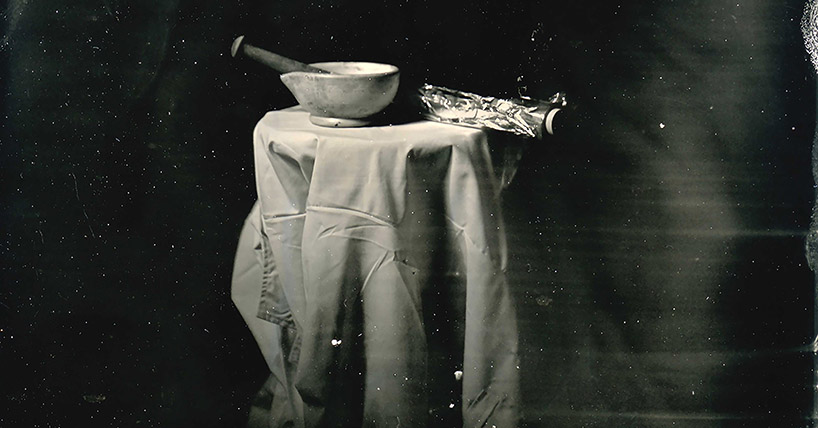Valence II
Valence II
Published on: 18 August 2021
Valence 2 is an art and science collaboration and investigation at Newcastle University between the Fine Art Department and the Wellcome Centre for Mitochondrial Research (WCMR).
Mitochondria
Artists, a poet and an architect have worked with scientists to create six projects for Valence II, including a film, an interactive sculpture, a book of art and poetry.
Each piece looks at different aspects of mitochondria – the energy producing components of the cells of animals and plants. Mutations in mitochondrial DNA can cause an energy deficit resulting in mitochondrial disease that predominantly affects the brain, liver, muscle and heart causing symptoms such as epilepsy, stroke, and muscle weakness.
The WCMR within the Newcastle University Translational and Clinical Research Institute, is an international centre of excellence at the forefront of basic and clinically driven mitochondrial research. Its vision is to improve the lives of those affected by mitochondrial dysfunction through the delivery of novel, life changing, precision therapies developed though its own pipeline of innovative laboratory research.
Combining art and medical science is a strong element of the Fine Art Department’s interdisciplinary work. Staff been working with the WCMR for several years on collaborations between their researchers and students from various creative disciplines. The team leading the project are David Butler, Senior Lecturer in Fine Art, artist Olivia Turner, a PhD student in Fine Art and Dr Julie Murphy, Public Engagement Officer at WCMR.

Six projects showcased
The six projects showcased at Valence 2 at Vane Gallery are:
Millie Avis (artist), Sarah Picket and Katja Menger (scientists)
Process in Motion developed from an initial interest into mitochondrial dynamics through to an investigation of the abstract notion of fluidity within mitochondrial networks. Through repeated processes of fission and fusion, mitochondria are in a constant flow of movement within the cell. The project also responds to the technical processes within scientific research in correspondence with the process of creation.
Millie says: “My practice frequently engages with scientific themes so the opportunity to work with researchers has been challenging but hugely inspiring. It exposed me to new perspectives enabling our project to develop in ways independent work might not have provoked. It has been fascinating to see the boundaries between science and art dissipate.”
Sarah says: “Seeing the beauty of the scientific process and mitochondrial dynamics evolve through the eyes of an artist has been a hugely thought-provoking and rewarding experience. Katja comments that, ‘The stages from inception to finished art work are similar to the scientific approach of defining and redefining research questions to obtain information about processes within human cells.”
Natalie Crick (poet), Lorna MacKay (artist), Megan McNiff (scientist)
Heavenly Bodies is a collaborative artists’ book and series of images by Lorna MacKay using Victorian era collodion photographic processes with poetry by Natalie Crick, inspired by scientist Megan McNiff’s research, focusing on mitochondrial DNA (mtDNA) mutations and how they can lead to biochemical dysfunction. One type of collodion photographic process, the tintype, was patented in 1856, one year before the role of mitochondria was first discovered, informing the decision to use this medium.
Natalie says: “It’s been challenging and exciting to enter an arena of new, undiscovered territory. Usually accustomed to writing make-believe poetics from the dark of my imagination, entering the clinical reality of the lab with Megan McNiff was eye-opening and raw. I feel honoured to collaborate with Lorna MacKay and give words to her imagery. The complexities and vibrancy of that ekphrastic fusion has broken boundaries for me.”
Lorna says: "Collaborating with Natalie and Megan has made me aware of how critical that is for greater public engagement with the medical community. I’ve observed the methodologies of different disciplines and approaches, while learning about world-leading mitochondrial disease research. And I’ve gained new skills courtesy of collodion wet plate photography specialist Andy Martin."
Raphaella Davies (artist), Joanna Elson (scientist)
Correct' Communication: an essential for cellular and human function focuses broadly on mitochondrial DNA and communication. In basic terms mitochondrial disease manifests itself due to a communication breakdown in genetic DNA. Joanna and Raphaella share an interest in linguistics and wanted to combine this. They spoke with ten scientists about their research, located across the globe with different first languages. The film developed from those conversations and looks to highlight the complexities of communication, its shortfalls, and challenges.
Raphaella says: “Not only does the content of the conversation demonstrate a global lack of ability to find mutual commonality, it also alludes to the communication breakdown that happens in the genetic mitochondrial DNA.”
Correct has contributions from: Raphaella Davies, Joanna Elson, Dan Mishmar, Vincent Proccacio, Marianne Pretorius, Katlego Sejo, Ana Ion, Galya Klink, Amica Muller, Anton Vila, Ahmad Alahmad.
Adam Denton (artist) and Gareth Ettridge (scientist)
Crosstalk is generated from discussions between Adam Denton and Gareth Ettridge. Through a hybrid making approach involving studio composition/editing, randomised asynchronous sequencing and improvised movement, the multichannel piece addresses ideas of symbiosis, poly-duration, mutation and cellular noise.
Adam says: “Talking with Gareth, I became intrigued by the notion of symbiotic events within the primordial ooze, where larger cells engulfed smaller ones and where it is widely accepted that mitochondria came into being. During these discussions we also arrived at these ideas of poly-duration, multiple speeds and randomised experimental sequences.”
Ella Louise Jones (artist), Ana-Mădălina Ion (scientist)
Tactility of Microscopy is an interactive opportunity for audiences to engage with sculpture, inspired by microscopy images of mitochondrial linking (‘fusion’). Accompanying the work are digital prints encouraged by the textures in the sculptures and tactile quality of digital mitochondria images.
Ana says: "I had to push my mental boundaries and unleash my creativity. I finally had the chance to talk about science the way I would like to talk about it."
Ella comments: “I learned so much about our bodies. Ana explained the mitochondria as if they were human, making it easy and relatable to understand her experiments. I hope the artwork creates a playful experience to see a mitochondrial shape and string-like texture through interaction with the work.
“I hope it reflects the lively and exciting nature of our collaboration. Ana has made me think a lot about language in my practice and how it to can be playful in learning, understanding and creating narratives to make science relatable.”
The exhibition is supported by the Wellcome Trust, Newcastle University Institute for Creative Arts Practice and Newcastle University’s Arts and Medical Research Cluster.
Valence II is on show at Vane Gallery until 28 September.



